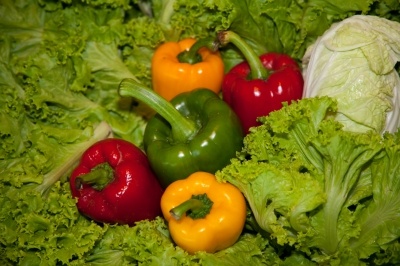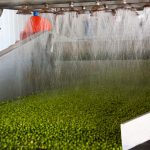
When it comes to food safety, handling fruits and vegetables properly is probably as important as handling meat products. We’re all familiar with food poisoning cases especially ones involving chickens and Campylobacter in supermarkets and food influencers describing meat as a grenade because of the potential development of harmful bacteria. Don’t be complacent with fruit and veg. There is a suggestion in the statistics that they can be responsible for more food borne diseases than anything.
Many of us might want to follow a vegetarian or vegan diet because we know that eating plenty of vegetables, nuts and fruit offers significant health benefits. Those health benefits relate to reducing the risks of cardiovascular disease, strokes, reducing blood pressure and some types of cancer. There is certainly a general trend away from high-calorie foods and a reduction of overall intake in meat.
Unfortunately, if we are not careful, those very foods can also harbour some unpleasant bugs which can even cause death. Just think of the news items relating to E. coli, Listeria and Salmonella which cause major issues for susceptible populations. At least half the food poisoning cases in the USA are related to germ contamination of fresh produce which sounds staggering. The situation is even worse for sprouts and salads if they are not handled properly. Sprouts in particular are susceptible to both E.coli and Salmonella contamination.
However, following a few simple practices for handling uncooked food produce is vital to ensure food safety. One of the best set of directions comes from the Centers for Disease Control and Prevention in the USA. I’ve produced copy here, but please reference them because each statement contains important information:-
- Check fruits and vegetables for bruising and damage.
- Throw away fruits and vegetables that are spoiled or have been recalled.
- Wash your hands, kitchen utensils, and food preparation surfaces, including chopping boards and countertops, before and after preparing fruits and vegetables.
- Clean fruits and vegetables before eating, cutting, or cooking, unless the package says that the contents have been pre-washed. ◦Wash or scrub all fruits and vegetables under running water—even if you do not plan to eat the peel—so dirt and germs are not transferred from the surface to the inside when you cut the produce.
- Dry fruit or vegetables with a clean paper towel.
- Keep fruits and vegetables separate from other foods that could contaminate them, such as raw meat and seafood.
- Refrigerate fruits and vegetables that you have cut up, peeled, or cooked as soon as possible, or within 2 hours. Refrigerate within 1 hour if the temperature outside is above 90°F. Chill them at 40°F or below in a clean container.
Reference: https://www.cdc.gov/features/foodsafetyquiz/index.html Accessed 18th January 2018.

Leave a Reply